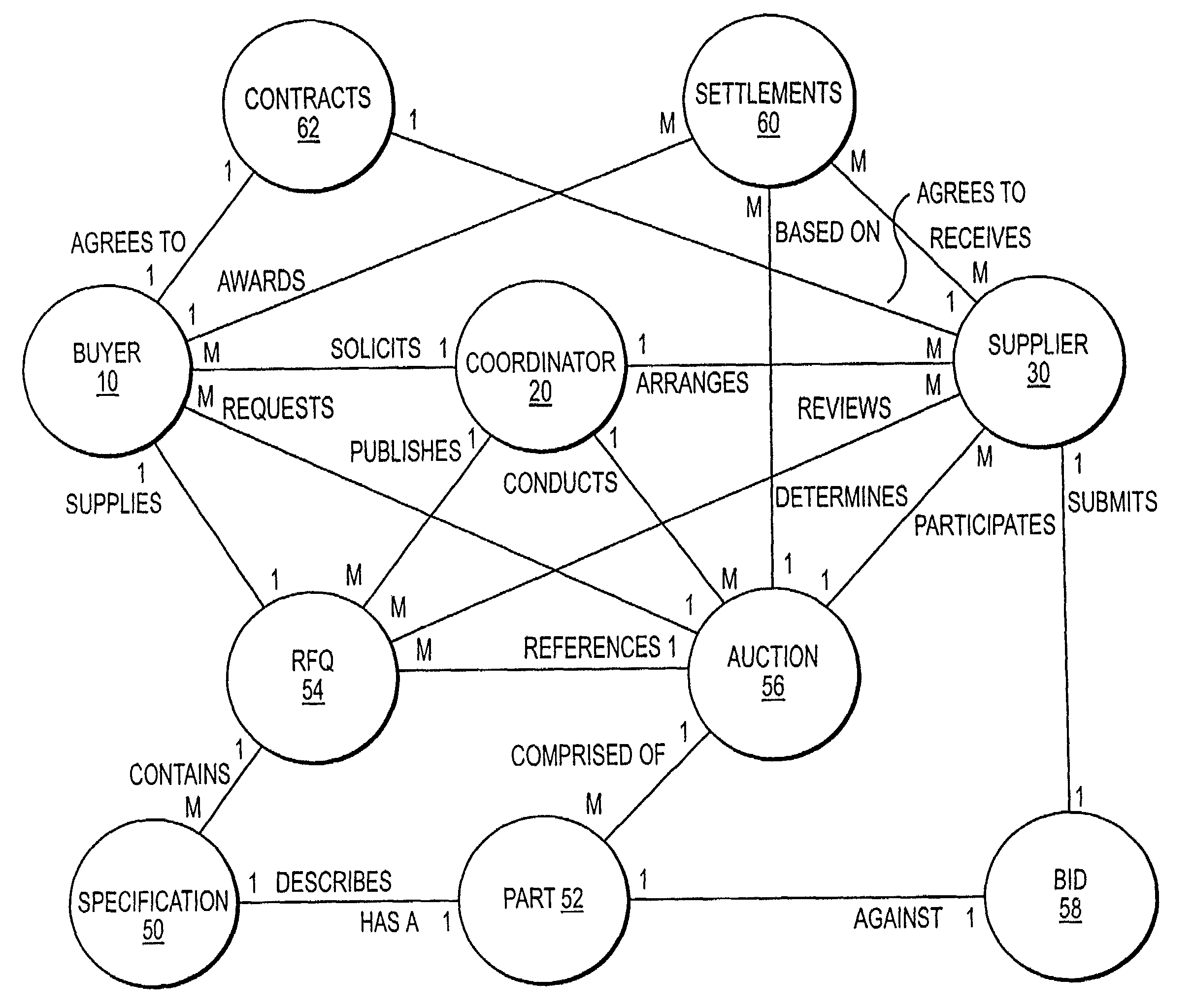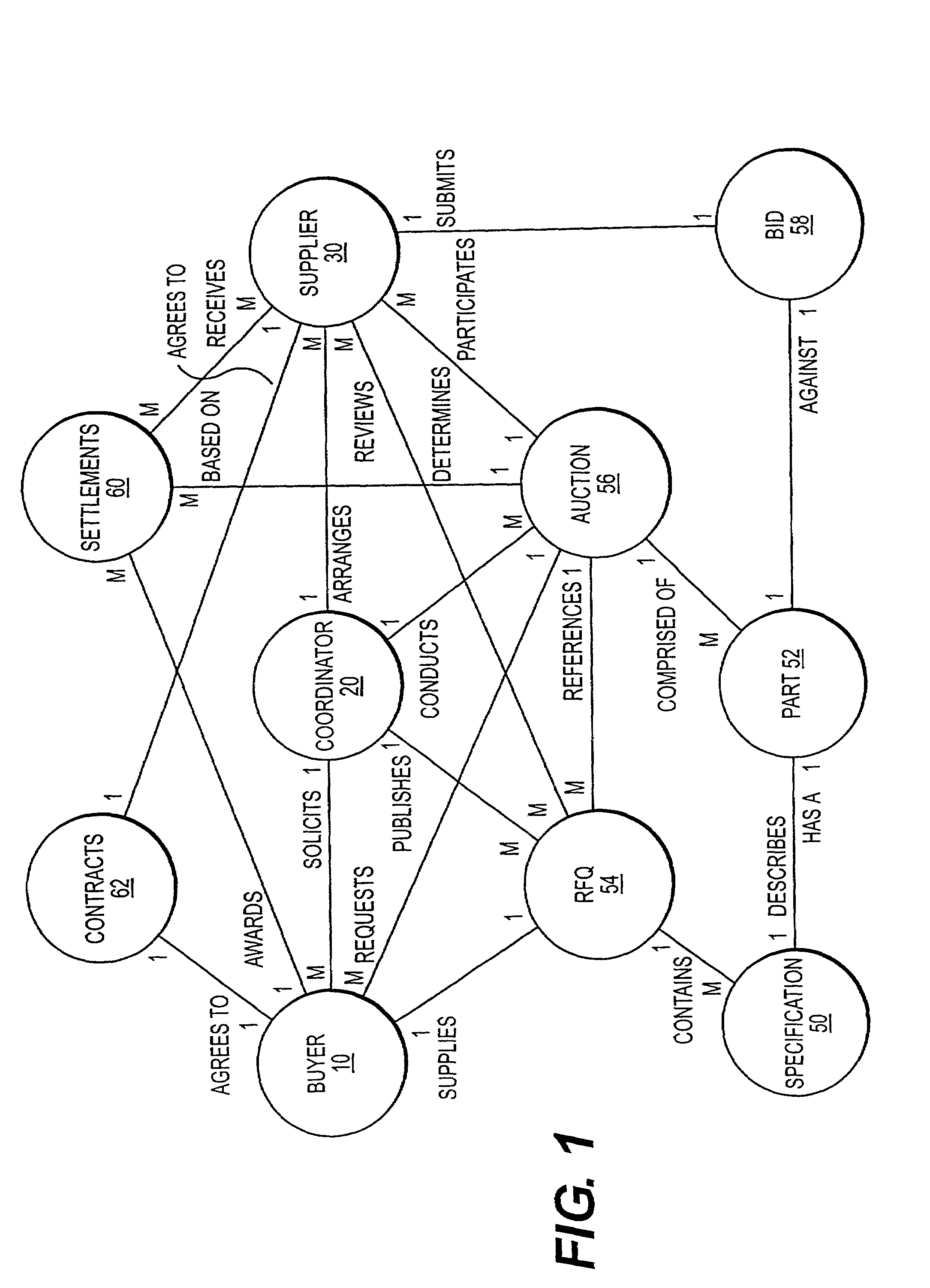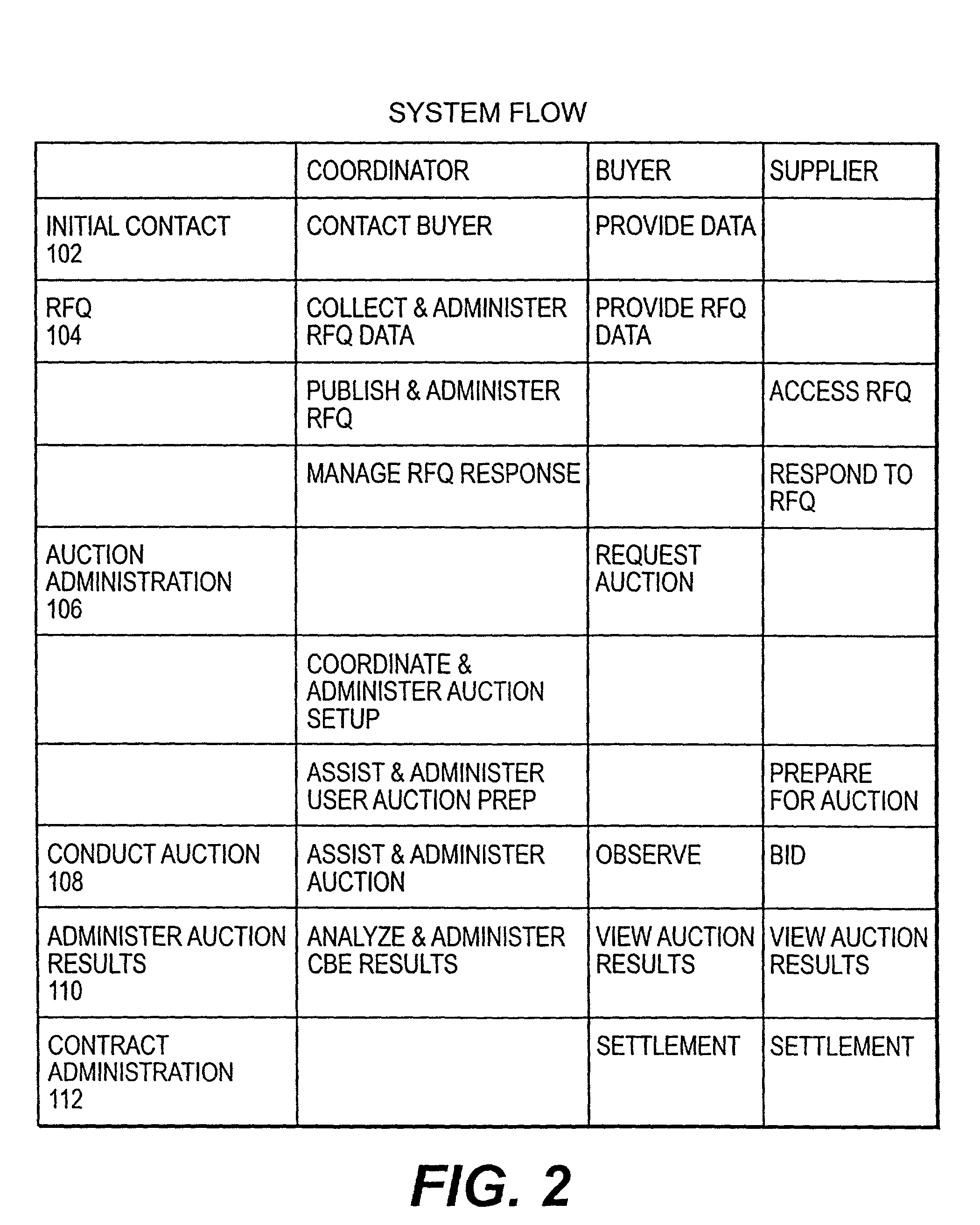Procurement of supplies has traditionally involved high transaction costs, especially information search costs.
However, customers were not satisfied with being “locked in” to one supplier—they wanted to be able to compare a number of competing products to be sure of getting the product features they wanted, at the best price.
The catalog and buyer-bidding auction types of
electronic markets do not work in some situations however.
If the required product is custom, it is not possible for suppliers to publish a set price for a catalog market.
Likewise, it is not possible for buyers to identify the product they want to bid on in a buyer-bidding auction.
There are fewer suppliers and no
standard product and pricing information available for the buyer of custom industrial products.
The search is slow and somewhat random because it usually relies heavily on personal relationships.
The costs associated with locating vendors, comparing their products, negotiating, and paperwork are a big factor in the make-or-buy decision.
The cost of switching suppliers is very large, which means that the quoted price is probably not the lowest fair price and that it is hard for a new supplier to enter the market.
Capacity availability, desirability of this particular buyer as a customer, desired levels of profit, and desire to diversify into other markets can all affect the price the seller is willing to accept to supply the needed product.
If not considered, these human factors can interfere with achieving desired outcomes.
The fast response required creates cognitive limits—a bidder cannot realistically focus on more than one decision at a time.
Many bidders are under some sort of
emotional stress when participating, due to the change involved.
In some cases, incumbent bidders are literally “fighting for their lives” in situations where losing the contract in question literally means losing their business.
Problems with Prior Auction Process
The problems include: a) multiple lot closing time collisions; b) premature lot closings; c) difficult and inflexible bidding constraints due to lot /
line item structure; d) possible prejudice to bidders resulting from technical disruptions; and e) possible prejudice to bidders resulting from submission of erroneous bids.
The first problem is collision of closing times for multiple lots.
In fact, overtime delays have at times overrun the scheduled closing time of a subsequent lot.
This situation begins to tax cognitive limits, and bidding opportunities on the subsequent lots are often missed.
Although this problem might be resolved by spacing market closing times at a substantial distance apart, experience has shown that even this approach would not be sufficient.
The second problem is premature closing of bidding on lots.
Thus, it has been found that this is an overly simplistic model, which may still be
cutting off bidding too soon.
Another difficulty encountered by bidders in the prior
system is that bids needed to be made at the
line item level.
For example, a fabricator may not have control of
raw material costs.
Initial online auctions only allowed
line item price adjustments, and it was difficult to fine-tune the mix of bids.
This was frequently too time-consuming to keep pace with the auction.
However, a pro rata apportionment may result in individual items being priced at levels that are uneconomic for the bidder.
Another problem that can arise either in regular bidding or in Overtime is addressing technical disruptions.
Real-time technical or operational disruptions in the communications network,
software or hardware during the course of a bidding event may prevent a bidder from fully participating.
Disruptions may arise in the online network or due to the equipment used by an individual bidder.
In addition, market events or imperfections may disrupt bidding activity and require communication with bidders before the auction can continue.
Other external factors may disrupt the operation of the auction or participation by bidders.
This was not discovered until many bidders failed to commence bidding.
With a business-to-business transaction, it is typically commercially unacceptable for any bidder to be denied full participation.
However, where disruptions arise in the course of a bidding event, the bidding activity and positions of other bidders cannot be prejudiced.
Another problem that occurred in the previous
system was the submission of erroneous bids.
Bidding errors can happen due to the nature of the online auction.
The pace or intensity of the bidding activity can exceed cognitive limits of bidders.
Therefore, the economic damage to suppliers that would be incurred by honoring an erroneous bid is substantial.
In an online industrial auction, an incorrect bid can upset the bidding behavior of other bidders creating inequity for all participants in the market.
If one of the bids is made in error, and the other bidders proceed to bid in response, the integrity of the auction is damaged.
 Login to View More
Login to View More  Login to View More
Login to View More 


